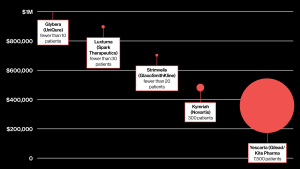Designer Babies: An Ethical Dilemma
Written By: Manya Davis
Designer babies are created by genetically modifying the DNA of an embryo to influence the expression of desired genes. Currently, scientists are exploring the broad applications that CRISPR, a tool used for editing genomes, has on the advancement of designer babies. This topic is an issue consistently brought up for ethical debate because of the concern that people will inevitably take advantage of gene editing. While genetic engineering has become more publicly accepted since its discovery in 1973, the moral dilemma of introducing designer babies as a viable option in society remains to be determined (U.S. Food and Drug Administration, 2020).
Benefits of Designer Babies
From an evolutionary perspective, it isn’t possible for processes such as natural selection to drastically decrease the frequency at which disease-associated genes are expressed in humans—especially in a short time frame. This is where genetic engineering provides an influential role. By altering the DNA of an embryo, scientists can increase babies’ resistance to several hereditary diseases such as cystic fibrosis and breast cancer. The problem then derives itself from how scientists attempt to enhance babies’ DNA—by making modifications to germline cells and not to somatic cells. When alterations are made to a person’s somatic cells, the change in gene expression is restricted to only that individual. However, germline cells are reproductive cells, meaning that changes to these cells will be passed on from generation to generation.Therefore, genetically modifying germline cells in embryos can decrease the frequency at which the expression of hereditary diseases occurs in future generations. While this seemingly has a lot of potential benefits, negative implications regarding the welfare of society must also be considered.
Potential Consequences of Designer Babies
The potential benefits of genetically modifying embryos are still being weighed with its negative societal consequences. The purpose of furthering research on designer babies is “to avoid their having heritable diseases coded by mutations in DNA”, thus helping those who are affected by severe genetic disorders (Pang & Ho, 2016). Yet, those with these genetic disorders are actually disproportionately affected by the rise of designer babies, because their disease often impedes their ability to obtain socio-economic stability, rendering them unable to afford the high cost of genetic modification (See Figure 1). Though the prices of gene editing will inevitably reduce with the advancement of genetic technology, the current costs of genetic modification are still incredibly high. The encouragement of genetic modification practices will, therefore, create a narrow market of consumers who are the only ones who can afford gene editing. This will increase the risk of exploitation of these resources by individuals who don’t need them and result in an imposed societal gap between those who can pay for gene editing and those who can’t. Customers who can afford gene editing may try to edit their child’s genome to increase the probability of them being tall or having certain colored eyes, both of which can be classified as an abuse of resources, while individuals who more genuinely need gene editing to prevent heritable diseases may not be able to afford it.
Figure 1

Price of Different Types of Gene Therapy and Number of Eligible Patients
Source: MIT Technology Review
While it is true that designer babies hold a lot of potential benefits when it comes to disease prevention, it is necessary to consider the ethical dilemma which draws a fine line between using gene editing resources for sustainable and moral reasons and the exploitation of those resources. It is also important to evaluate the methods at which scientists are aiming to achieve the advancement of designer babies. Since entire generations can be affected by modifying germline cells in embryos, the question of whether gene editing should be limited to an individual is raised. Although enhancing the DNA of a baby can increase its aptitude for health, the science of gene editing isn’t separate from those who can and will abuse it. Society must, therefore, decide whether or not to allow the development of designer babies by weighing the potential benefits and drawbacks.
References and Sources
Gallagher, J. (2017, August 2). Human embryos edited to stop disease. BBC News. https://www.bbc.com/news/health-40802147
Mullin, E. (2017, October 24). Tracking the Cost of Gene Therapy. MIT Technology Review. https://www.technologyreview.com/2017/10/24/148183/tracking-the-cost-of-gene-therapy/
Pang, R. T. K., & Ho, P. C. (2016). Designer babies. Obstetrics, Gynaecology & Reproductive Medicine, 26(2), 59–60. https://doi.org/10.1016/j.ogrm.2015.11.011
S, S. (2020, February 7). Designer Babies, The Key To A Better Developed World. Www.seisen.com. https://www.seisen.com/student-life/seisen-post/features/~board/seisen-post/post/designer-babies-the-key-to-a-better-developed-world
U.S. Food and Drug Administration. (2020). Science and History of GMOs and Other Food Modification Processes. Science and History of GMOs and Other Food Modification Processes. https://www.fda.gov/food/agricultural-biotechnology/science-and-history-gmos-and-other-food-modification-processes
Vidyasagar, A., & Lanese, N. (2021, October 21). What Is CRISPR? Live Science. https://www.livescience.com/58790-crispr-explained.html